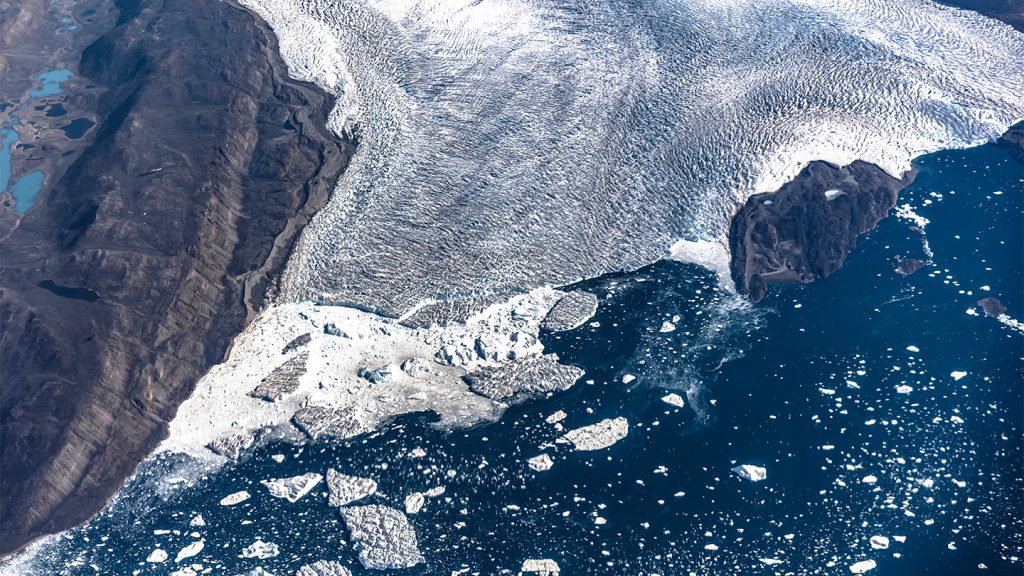The change in climate might be making it more difficult to accurately tell the time.
The ice sheets on Greenland and Antarctica are melting rapidly, causing a shift in mass towards the Earth's middle, as observed by satellite-based gravitational measurements. This is resulting in a slower rotation of the planet.Geophysicist Duncan Agnew stated online on March 27 that this climate change-induced mass shift is causing complications for international timekeeping standards. NatureThe coordinated universal time, set by atomic clocks, is regularly adjusted to match the Earth's actual spin, which is influenced by various factors such as gravitational forces from the sun and moon, changes in the Earth's core rotation speed, friction between ocean waters and the seafloor, and shifts in mass distribution on the planet's surface. Even earthquakes can impact the spin speed – for example, the 2004 magnitude 9.1 earthquake in Indonesia changed the land surface in a way that caused the Earth to rotate slightly faster, according to Agnew from the Scripps Institution of Oceanography in California.
The need for occasional adjustments to synchronize atomic clocks with the Earth's rotation led to the introduction of the 'leap second' in 1972, a method where an extra second is added to the UTC as necessary. Since then, 27 leap seconds have been added.
Agnew finds it particularly remarkable that the impact of the ice sheets melting is much greater than that of the earthquake. He points out that humanity has significantly affected the Earth's rotation speed.
However, the leap second system is not favored by measurement scientists, as it does not occur on a regular schedule, and different systems are used by financial markets and satellite navigation that rely on precise timing. These inconsistencies can make it challenging to establish a universal time. In 2022, an international consortium of measurement scientists voted to eliminate leap seconds and instead add larger units of time less frequently, possibly a minute. The details will be finalized in 2026 at the next meeting. This change has delayed the need for timekeeping adjustments by a few years, as a leap second was last added in 2016. Currently, Earth's rotation and atomic clocks are almost synchronized.However, Agnew's calculations suggest that this is only a temporary relief. The most significant changes to the Earth's rotation are currently caused by the slowing rotation of the Earth's core, which in turn accelerates the spin of the outer layers.SN: 1/19/24This will mean that, under the current system, timekeepers will have to start removing leap seconds from the UTC to maintain synchronization.
That change in plan may have started around 2026. However, the research shows that due to climate change, global timekeepers now have an extra two or three years before they must make adjustments. Geophysicist Jerry Mitrovica of Harvard University points out that no realistic predictions of future melting can delay the inevitable beyond 2030. In one way or another, the world will have to start losing time, or international timekeeping guidelines will need to be updated. more Ice sheets at the poles are melting faster, which is making Earth's rotation slower. This is impacting how we coordinate our clocks to measure time.
That may not come a second too soon. The slightly slower rotation has actually delayed the need for timekeeping adjustments by a few years, Agnew says — in fact, as a result of this change, the last time a leap second was required to be inserted was in 2016. At the moment, in fact, Earth’s rotation and atomic clocks are nearly in sync.
But that’s just a brief respite, Agnew’s calculations show. The biggest changes to Earth’s rotation right now are coming from its heart: slowing rotation of Earth’s core is actually speeding up the spin of the outer layers (SN: 1/23/23). That slowdown will ultimately mean that timekeepers, under the current system, must begin removing leap seconds from the UTC, rather than inserting them, to keep things in sync.
That shift in strategy might have begun as soon as in 2026. But the study suggests that, thanks to climate change, global timekeepers now have an extra two or three years before they need to adjust, notes geophysicist Jerry Mitrovica of Harvard University. But no realistic projections of future melting can forestall the inevitable beyond 2030, Mitrovica adds: One way or another, the world is going to have to start losing time — or international timekeeping guidelines will need to change.



